RAINY DAYS IN A CARNIVAL OF SOUND: The Lost Renaissance of Jan & Dean
By Mark A. Moore
Author of Dead Man’s Curve: The Rock ‘n’ Roll Life of Jan Berry
The original run for Jan & Dean ended with a bang just before noon on April 12, 1966, sealing a legacy of eight years with 26 chart records, including seven Top 10 and sixteen Top 40 hits, plus various stabs at film and television. Two months later, arranger-producer Jan Berry was discharged from the hospital, and the musical Renaissance of Jan & Dean began almost immediately. So why did it take twelve years and a television movie to rekindle interest in Jan & Dean as a nostalgia act, purveying the Utopian lifestyle of Southern California? Why didn’t the masses get to hear the new music that would have helped Jan & Dean make the transition in 1966-68 — the all-important era when rock music began to be taken seriously; the transition that allowed bands like the Beach Boys to have their earlier catalogs re-evaluated after creating such albums as Pet Sounds and the mythical Smile? The answer for Jan & Dean is perplexing and more than a little disappointing.
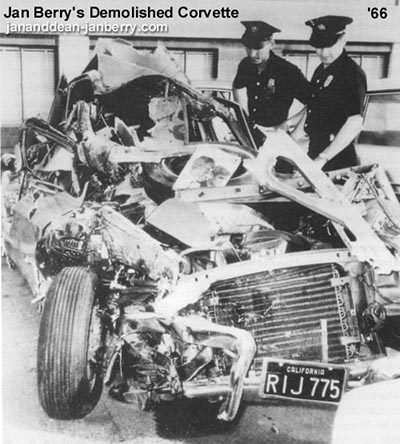
Jan left the hospital on June 13, 1966, facing an uphill battle against brain damage and partial paralysis. In July, Dean Torrence got the ball rolling again in hopes of keeping the duo’s name alive while Jan recovered. Launching the J&D Record Co., Dean produced a single titled “Summertime, Summertime” / “California Lullaby” (the B-side is one of his finest compositions). By late summer, however, problems that would eventually derail Jan & Dean’s re-emergence began to rear their ugly heads. In August, Jan’s lawyer told Dean not to violate any existing contracts to which Jan was a party; and by September, Jan’s business managers were pointedly asking Dean for details about his efforts.
Nevertheless, Dean forged ahead, and on September 23, 1966, the master for “Like A Summer Rain” was cut at United Recording in Hollywood. The B-side was “Louisiana Man,” a song that marked a unique collaboration between Berry and Torrence. Dean added vocals to an old standard Jan had been producing before his accident. The song had been a country hit in 1961 for writer Doug Kershaw — a Louisiana native — and his brother Rusty (on the Hickory label). It was a catchy yarn about growing up in a houseboat on the “Looziana River,” about fishing and trapping in the Bayou, and the wonders of going “into town” for the first time and being exposed to the magic of motion pictures.
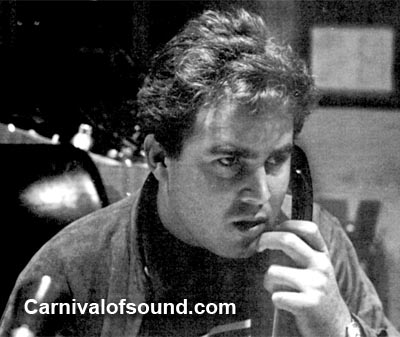
Jan was credited with producing “Louisiana Man,” while Dean produced the A-side. The track for “Louisiana Man” featured a prominent part for mouth harp and twanging guitars, with Dean singing lead and harmonies. Some of Dean’s handwritten lyrics for this tune still reside in Berry’s personal music archive. More than anything, “Louisiana Man” offered a symbolic bridge between Jan’s pre-accident productions and Dean’s early attempts at keeping the name alive — not to mention Dean’s emergence as a producer in his own right.
Dean issued the new single in October, and followed it up in November with Save For A Rainy Day — the pièce de résistance of Torrence’s musical endeavors. Released via the J&D Record Co., Save For A Rainy Day was a moody and atmospheric album of self-penned new material and covers centered around a theme of rain — issued as “Jan & Dean.” The project’s top-flight musicians included James Burton, Joe Osborn, Larry Knechtel, and Mickey Jones. Meanwhile, Dean’s single productions went nowhere, despite ostensible distribution from Dunhill and Magic Lamp.
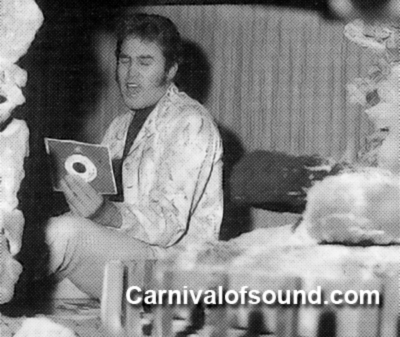
It was early 1967, however, when things really went downhill. Dean connected with Don Zaccaglini and Magic Lamp Productions, signing a new Jan & Dean contract with Columbia Records. In February, when Columbia issued a single under the name “Jan & Dean” titled “Yellow Balloon” / “Taste of Rain,” all hell promptly broke loose. Why? Because Berry was still signed to Screen Gems as a songwriter, producer, and artist. Jan had tried hard to break his ties with Screen Gems — but it didn’t happen before his debilitating auto accident. So while Jan was incapacitated, Screen Gems suspended his pre-accident songwriting, producing, and artist contracts (without terminating them), with a view toward renewing when Jan recovered. The pre-accident deal with Liberty Records (also under the auspices of Screen Gems) had expired on March 31, 1966, but the mother company still had a stranglehold on Berry.
Naturally, Screen Gems informed Columbia they had no right to sign Jan & Dean as artists; and in early March they sent Don Zaccaglini and Columbia an order to “immediately cease and desist” with “anything related to “Jan & Dean.” As a result, the promising single “Yellow Balloon” was dead before it ever hit the charts — not to mention the new Columbia version of Save For A Rainy Day. Meanwhile, old friend Gary Zekley (co-writer of “Yellow Balloon”) had tried to undermine Torrence (and Jan & Dean) by rushing out his own version of the song. Amazingly, both hit the charts (“bubbling under”) in the same week on March 18, 1967 — Zekley’s version at #114 and Torrence’s at #117. But with Screen Gems pulling the plug on Columbia, Dean’s version evaporated after reaching #111, which left the way open for Zekley’s version to hit the national Top 30 without any competition from “Jan & Dean” — (Strike One).
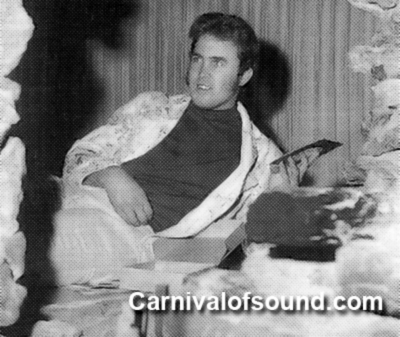
But if Screen Gems launched the first damaging salvo against the musical Renaissance of Jan & Dean, it was Berry and Torrence themselves who helped administer the coup de grace.
In April 1967, one year to the month after his accident, Jan was back at work in the studio. He had trouble speaking, and couldn’t sing yet, but he could still write music notation (slowly); and with the help of patient collaborators — people he’d worked with before the accident, plus a few newcomers — Jan was still able to write, arrange, and produce music.
Despite a vitriolic relationship with Liberty and Screen Gems before his accident, Berry almost re-signed with Liberty. A contract (which still exists) was drawn up — a one-year deal for eight sides. But the deal was ultimately rejected. Screen Gems was the driving force, and they weren’t above signing with Columbia (or any other label), provided their permission was given.
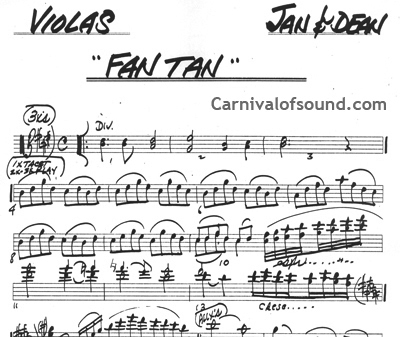
Thus, in May 1967, Jan’s attorney laid out the terms upon which Berry would be willing to sign with Columbia. Terms were given that would have been virtually identical to Jan & Dean’s pre-accident contracts with Screen Gems. This meant, on top of Screen Gems’ and Columbia’s percentages, Jan would be signed and paid as both a songwriter and the sole producer, while the artist contract would be split equally between Berry and Torrence (meaning Jan would make more money, just as he had before the accident). But at the same time, the proposed deal stipulated that Jan would agree to the release of the Torrence-produced Save For A Rainy Day LP — provided Columbia would purchase the masters for three new sides that Berry was currently producing: “Hawaii,” “Fan Tan,” and “Love & Hate.” It was a productive counter-offer, but Dean declined, and Columbia dropped it (which is why rabid collectors worldwide, to date, have found only a handful of copies of the Columbia version of Dean’s Save For A Rainy Day). In retrospect, this was a golden opportunity missed for Jan & Dean’s legacy, and it reveals a power struggle between Berry and Torrence. Given Jan’s new disabilities, Dean understandably thought he would assume the reins and take over. But Jan looked his partner in the eye and told him otherwise — (Strike Two).
Between April and August 1967, Berry and his collaborators produced the above-mentioned tracks, plus “Tijuana” (the latter getting Jan in trouble with Screen Gems for using the 1964 track for “Little Old Lady”). Jan also attempted a version of the Doors’ “Light My Fire” (which took a back seat to the others, but continued to be scored, musically, into 1968). A backing track for this tune is currently tucked away in the vaults at Capitol/EMI.
Through it all, Jan was suffering from aphasia (difficulty in communicating his thoughts) and apraxia (difficulty in enunciating words). Moreover, from a psychological standpoint, Jan couldn’t accept or admit the severity of his impairment, let alone the prospect of relinquishing control of Jan & Dean. While Jan’s doctors deemed him mentally unfit to regain control of his own finances, Jan proudly informed them he was writing “psychedelic music.” But on April 25, Jan’s failure at trying to sing lead vocals overwhelmed him. He cancelled a session the next day, and flew to Hawaii — where he was picked up by police on Waikiki Beach after allegedly trying to hurt himself by biting his own wrists. Jan ended up in The Queen’s Hospital in Honolulu. His dad flew over to pick him up; and by May 1, Jan was back in the studio in Hollywood, presiding over an arranging session for the song “Hawaii.”
On May 5, Jan popped some pills, then called his dad and others, saying he’d overdosed. After a frantic response and a trip to the hospital, Jan was deemed completely “alert” by medical staff and sent home. Jan used this incident to manipulate those around him, and to taunt his father — the person who, as Jan’s conservator, held sway over all business aspects of Jan’s life. But on May 10, Jan was back at Western 2 on Sunset presiding over a vocal session for “Hawaii” and “Fan Tan.” (It would be 1972 before Jan could record and release his own meaningful lead vocals again).
Berry was also struggling with a severe impulse disorder (accompanied by fits of rage and frustration), with no regard for spending money. Jim Mackenzie at Western Recorders knew Jan’s situation, that Jan had to be kept within a certain budget, and that he was not to be given any dubs from which pressings could be made. But in Mackenzie’s absence, Jan wrangled multiple dubs from Western that were usable for pressing masters. So between July and August 1967, Jan used unfinished masters from Western to have thousands of records pressed at Fidelatone Manufacturing Co. in Hawthorne, California. These are the infamous “Jan & Dean Label” recordings, and at least 2,189 pressings were made (much to the chagrin of Jan’s lawyer and his conservator/father, Bill Berry). The prototype label design for these illicit 45s was accompanied by Torrence’s letterhead for Kittyhawk Graphics. All told, Jan spent a whopping $14,000-plus in production costs (not counting pressings). Nevertheless, the tunes (minus “Tijuana”) showcased some fine new work from Hollywood’s elite musicians: Hal Blaine, Ray Pohlman, Larry Knechtel, Glen Campbell, Mike Deasy, Joe Osborn, Don Peake, and others. Sid Sharp led additional sessions for strings. These 1967 sessions are illuminated by AFM documentation. Moreover, the vocalists on these Berry productions (all confirmed by AFTRA) included Glen Campbell, Ron Hicklin, Stan Farber, Tony Minichiello (of Matadors/Sinners fame), Ian Freebairn-Smith, Bob Zwirn, and Jill Gibson. The arrangers were Jan Berry, Bill Stafford, and George Tipton. The copyist was Roger Farris. Sound Recorders Studio in Hollywood was also utilized for master dubs.
But Jan & Dean needed a real label. In the wake of the Columbia mess, MGM Records wanted no part of Jan & Dean; but Reprise did make an offer. Finally, in late August 1967, Joe Smith rolled the dice and signed the duo to Warner Bros. Smith wanted the “Jan & Dean” name, and explained as much in writing. Screen Gems finally approved this deal in October, and Warner paid $5,000 for Jan’s masters for “Hawaii,” “Fan Tan,” and “Love & Hate” (which still needed work). The contract was revised in October to extend through 1970. Also in October, Dean issued a groovy cover of “Vegetables,” from the Beach Boys’ unfinished Smile album — under the name “Laughing Gravy” (for obvious reasons) on the White Whale label. “Vegetables” went nowhere, but if this track could have been incorporated into the “Jan & Dean” fold, it may well have been a hit record.
In December 1967, Warner released “Only A Boy” / “Love and Hate” under the name “Jan & Dean.” The A-side featured a track recorded by Berry before his accident — a song about a young American soldier killed in Vietnam. Warner issued this single primarily because it featured Berry’s pre-accident lead vocals, and no doubt because Staff Sgt. Barry Sadler’s “Ballad of the Green Berets” had spent five straight weeks at #1 on the Billboard charts in 1966. Amazingly, Jan had been plugging “Only A Boy” around the country more than a year and a half earlier — just days before his accident. In early April 1966, during Jan & Dean’s final concert tour, Jan was incorporating the song into Jan & Dean’s set list — it was slated ninth in a ten-track set at the Hollywood Bowl on April 2 (the final week of Sadler’s reign at the top of the charts). Jan also left a copy of the song at KOMA Radio in Oklahoma City. On April 12 — the very day of Jan’s auto accident — DJ Charlie Tuna aired the track: “That’s Jan & Dean’s brand new record. It is a KOMA exclusive! It’s called ‘He was Only A Boy.’ That’s one they dropped off while they were in town. First heard on KOMA in the nation!” Berry was peddling one of his new tracks just days after Jan & Dean’s contract with Liberty Records officially expired.
Musically, “Only A Boy” featured a vintage Jan Berry instrumental track . . . but the B-side (“Love & Hate”) was more in keeping with the counter-culture sentiment of the times. In retrospect, “Love & Hate” (as a strong Berry production, despite his absence as a lead vocalist) should have been the A-side.
A second Jan & Dean Warner Bros. single, “I Know My Mind” / “Laurel and Hardy,” followed in June 1968, and was more in keeping with the spirit of Jan’s newer material. But with little promotion, neither single had any impact on the national charts.
Dean was unhappy. In fact, Warner Bros. had pushed for Dean’s name to be excluded from the contract, preferring to allow Jan to record as “Jan & Dean” with third parties. But Screen Gems insisted on Dean’s name being on the agreement. Dean did sign, but not before threatening to take out public ads saying he had nothing to do with Jan & Dean. It’s easy to understand the disgruntlement. But a lot was on the line — the musical Renaissance of Jan & Dean. In the end, Torrence never made any retaliatory moves. Instead, Dean actually helped a bit with publicity for Jan’s Warner Bros. sessions (including a few photo ops), and has even hinted that he may have sung on at least one of the vocal sessions.
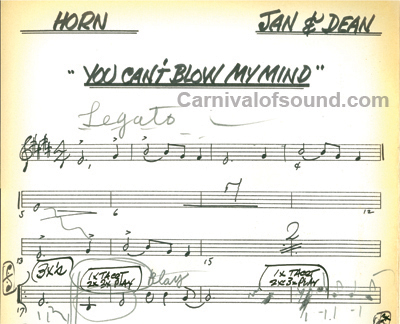
In the first half of 1968, under the auspices of Warner Bros., Berry co-wrote, arranged, and produced (with collaborators) a number of tracks for an album titled Carnival of Sound. Studios utilized included Western and Gold Star. One of Jan’s primary lyricists was old pal Roger Christian, who had collaborated with Berry on so many Jan & Dean hits and album cuts in the glory days before the accident. The same elite musicians were present; and vocalists included Ron Hicklin, Tom Bahler, John Bahler, Glen Campbell, Bob Tebow, B. J. Baker, and Gwen Johnson — an “A-list” group of studio singers whose various credits included the Monkees, Elvis Presley, the Partridge Family, Gary Lewis & the Playboys, Ray Conniff, Frank Sinatra, Happy Days, and numerous others. Aside from the title track, Warner singles, and three of the former “Jan & Dean Label” recordings, the songs for the album included “Blowin’ My Mind,” “Mulholland,” “Stay,” “In the Still of the Night,” and “Louisiana Man” — the latter a new version produced by Berry with a brass and woodwind arrangement. (The Pozo Seco Singers had scraped the Top 100 with the song in October 1967, with a similar showing by Bobbie Gentry in April 1968. In November 1969, the song reached its most lofty position when one of Doug Kershaw’s versions was beamed back to Earth during the flight of Apollo 12 — NASA’s second mission to the moon).
Nine songs on the 12-track acetate version of Carnival of Sound were Berry compositions. But despite a budget of $2,000 per side, Joe Smith had grown skeptical of the project since March 1968, realizing it would run way over budget. Then, in August 1968, Screen Gems used a clause in Jan’s original producing contract (specifying submission of one complete composition per month) to terminate the agreement — after having twice renewed Jan’s contract after his accident. This, along with mounting studio costs, effectively killed the Carnival of Sound project. It never saw the official light of day — (Strike Three, and Jan & Dean are out).
This set the stage for Jan’s solo work in the 1970s, the heyday of Dean’s Kittyhawk Graphics business, various Jan & Dean compilations, Paul Morantz’s 1974 Rolling Stone article about Jan’s recovery, and the first of numerous Torrence covers of Jan & Dean hits. All of this led to Deadman’s Curve, the 1978 film biography that helped put the duo back on the road — on the nostalgia circuit.
It wasn’t until 1996 that a wider, younger audience got to hear the previously self-released and little-known Save For A Rainy Day (on Sundazed Records). Reviews were positive overall, underscoring opportunities missed when they counted most. The remaining “lost” Jan & Dean album is currently languishing in the vaults at Warner Bros. The material is complex, with deep arrangements featuring sitar, brass, woodwinds, and strings. It’s time for Carnival — one of the last mysterious unreleased gems of the psychedelic era — to be officially released, and take its place alongside Save For A Rainy Day as part of a tandem of Jan & Dean offerings that should have been issued to the masses in 1967-68. Had those two albums come out in their original era, Jan & Dean would be seen in a completely different light today.
Originally published in Endless Summer Quarterly, Fall 2007.
Follow in Social Media: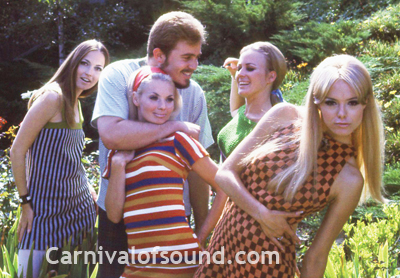
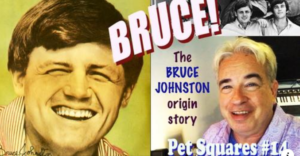
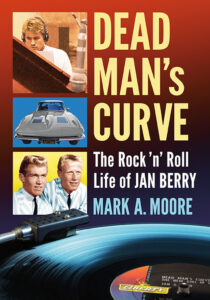
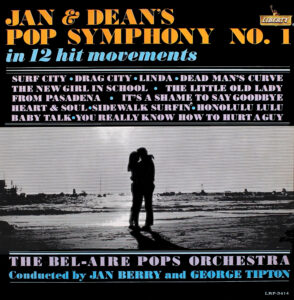
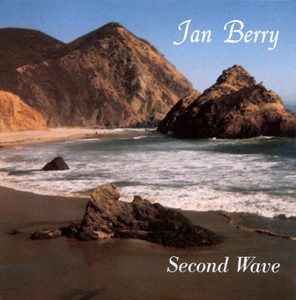
More Stories
Some Things You Never Forget!
Shades of Cool — An In-Depth Interview with Author Mark A. Moore
Carnival of Sound